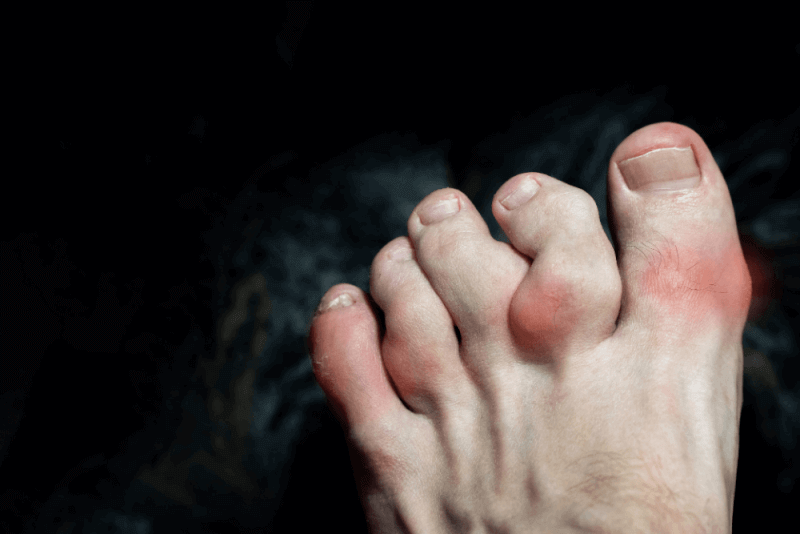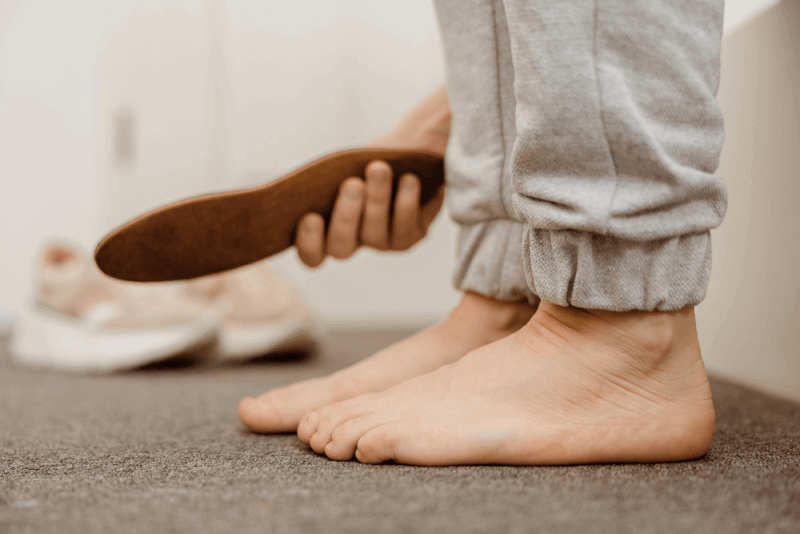30-Second Summary
- Knee osteoarthritis is a type of arthritis that tends to worsen with age. It is not only a serious and debilitating disease but also the most common form of arthritis.
- Knee X-rays are generally used for the diagnosis of knee osteoarthritis.
- Patients should maintain their ideal weight. This reduces the load on the knee joint and increases the potential benefit of the treatment.
- Knee osteoarthritis is not a curable condition. However, pain, swelling, and stiffness can be reduced with physical therapy, medications, and other treatments.
What Is Knee Osteoarthritis?
The knee joint is composed of the thigh bone, shin bone, and kneecap. A smooth substance called cartilage covers the ends of each bone. Cartilage prevents the bones from rubbing against each other and also acts as a cushion. A type of tissue that surrounds the joint, known as the synovial membrane, lubricates the cartilage.
Knee osteoarthritis is a condition that causes pain, swelling, and stiffness in the knee joint. It is a type of arthritis that tends to worsen with age. In addition to being a serious and debilitating disease, it is also the most common form of arthritis.
Types of Knee Osteoarthritis
There are about 100 different types of arthritis. Among them, the most common types that affect the knees include the following:
Osteoarthritis
This is the most common type of knee osteoarthritis. Osteoarthritis causes the cartilage cushioning the three bones of the knee joint to wear away. The absence of this cushion causes the bones to rub against each other, resulting in pain, stiffness, and limited movement. It can also lead to the formation of bone spurs. Osteoarthritis tends to worsen over time.
Post-Traumatic Arthritis
After a blow to the knee, the cartilage begins to wear down. Bones rub together, resulting in symptoms similar to those of osteoarthritis. Knee arthritis can occur years after the trauma.
Rheumatoid Arthritis
Rheumatoid arthritis is an autoimmune disorder in which the immune system behaves abnormally and causes inflammation in the joints even in the absence of a foreign invader. Inflammation causes the synovial membrane to swell, leading to pain, stiffness, and swelling. This also causes the cartilage to wear away.
Stages of Knee Osteoarthritis
Osteoarthritis, the most common form of arthritis affecting the knees, has five stages:
Stage 0
Also known as the normal stage, the knees are healthy and there is no arthritis.
Stage 1
Also referred to as the minor stage, there is slight wear and tear in the knee joints. Pain is typically not felt at this stage.
Stage 2
Known as the mild stage, pain and stiffness begin to be felt in the knees. However, there is still enough cartilage to prevent the bones from touching.
Stage 3
In the moderate stage, increased pain is felt especially during activities like running, walking, or squatting. Pain becomes more pronounced after long periods of rest. The cartilage has significantly narrowed, and many bone spurs are present.
Stage 4
In the severe stage, cartilage is almost completely lost. As a result, the knee joint becomes stiff, painful, and possibly immobile. Surgery may be necessary at this stage.
Causes of Knee Osteoarthritis
There are certain gene mutations that can lead to arthritis, including knee arthritis. However, many more genes likely remain undiscovered. Therefore, possessing a gene associated with arthritis can increase the likelihood of developing the condition. Additionally, some viruses or knee injuries may also trigger arthritis.
Although the exact cause is not fully known, certain factors can increase the likelihood of knee arthritis, particularly osteoarthritis. These risk factors include:
- It is more common in older adults than in young adults and children.
- Natural deformities in bones or joints can increase the risk of osteoarthritis.
- An inflammatory type of arthritis called gout can lead to osteoarthritis.
- Knee injuries
- Running, playing sports, or working in physically demanding jobs can place excessive stress on the knee joint, which may lead to osteoarthritis.
- Excess weight puts more pressure on the knees.
Symptoms of Knee Osteoarthritis
There are many different symptoms of knee osteoarthritis. These include:
- Creaking, clicking, or grinding sounds
- Difficulty walking
- Knee pain that changes with the weather
- Joint stiffness
- Knee buckling
- Gradual or sudden onset of knee joint pain
- Redness of the skin
- Swelling
- Locking or catching of the knee during movement
- Warmth of the skin
Pain and swelling are the most common symptoms of knee osteoarthritis. Certain treatments can help reduce severity and slow the progression of the disease.
Diagnostic Criteria for Knee Osteoarthritis
Knee X-rays are typically used to diagnose knee osteoarthritis. The aspects that can be assessed via X-ray include:
- The type of arthritis
- Any changes in the bones
- Bone spurs
- The amount of space between bones (the less cartilage, the narrower the space and the greater the pain)
In some cases, doctors may request an MRI or CT scan. In addition, to help diagnose knee osteoarthritis, doctors may ask the following questions:
- Is there a family history of knee joint inflammation?
- Is there knee swelling?
- Is the skin red?
- Is there warmth in the skin?
- Are the symptoms in one or both knees?
- How long have the symptoms been present?
- What medications are being used?
- What is the severity of the pain?
- How does it affect walking?
- Does it interfere with daily activities?
Pain Relievers and Anti-Inflammatory Medications
Over-the-counter medications such as ibuprofen, acetaminophen, or naproxen sodium can be used to manage pain caused by knee osteoarthritis. These medications should not be used for more than 10 days without consulting a doctor. Prolonged use may lead to side effects. If these medications are not effective, a doctor should be consulted.
Corticosteroid or Hyaluronic Acid Injections into the Knee
Corticosteroid injections into the knee are among the most commonly used treatments for knee osteoarthritis. To maintain the benefits of treatment, injections should be administered every 3 months.
Another injection treatment used for knee osteoarthritis is hyaluronic acid. This substance, which naturally exists in the synovial fluid that lubricates the joints, is injected into the knee joint to increase lubrication. This helps reduce tissue damage and pain. For effectiveness, it must be administered regularly for 3 to 5 weeks.
Another method used to reduce knee osteoarthritis pain is Botox application. Despite concerns about potential joint damage with local anesthetic injections, Botox is considered very safe. Its effectiveness can last between 4 to 12 weeks.
Another injection method is PRP (Platelet-Rich Plasma). Since it uses the patient's own plasma, it has no side effects. The growth factors in PRP not only help relieve pain but also assist in repairing joint tissues. Treatment typically lasts between 6 to 9 months, and a minimum of 6 months of treatment is required to see results.
Alternative Therapies
Some alternative therapies that may be effective include topical creams containing capsaicin, acupuncture, and supplements containing glucosamine, chondroitin, and SAMe.
Support Devices
There are two types of support devices used for knee osteoarthritis. The first is unloading braces, which reduce the load on the affected knee. The second type provides support for the entire knee.
Knee Osteoarthritis Exercises
If daily activities become difficult due to knee osteoarthritis, physical therapy and occupational therapy can be helpful. Physical therapy focuses on strengthening muscles and increasing joint flexibility. Occupational therapy teaches ways to perform daily activities with less pain.
Mesenchymal Stem Cells (MSCs)
Produced by the bone marrow, these cells can transform into new tissues, including cartilage. These cells are harvested and injected into the knee joint, with the hope of creating new cartilage and reducing inflammation.
Bone Marrow Aspiration Concentrate
This treatment uses the same concept as MSCs. Specialists extract cells from the body and use them to stimulate the healing process inside the knee. The advantage of this method is that bone marrow is easier to obtain than MSCs and contains other substances that promote cartilage regrowth and soothe inflammation.
Although still a new approach, studies have generally shown good or excellent results. However, as the research is ongoing, the treatment should be applied with caution.
Botox
The botulinum toxin used in Botox helps block nerve cells and is applied to reduce muscle spasms. Some doctors believe this method can provide lasting relief by disabling nerve cells. However, this does not change the structural condition of the knee.
Water-Cooled Radiofrequency Ablation
Water-cooled radiofrequency ablation is one of the experimental methods used for pain treatment. The aim is to deactivate the nerves that cause pain by heating them. However, since studies have been conducted on small groups, this method is not yet widely applied.
Knee Osteoarthritis Surgery
In severe cases of knee osteoarthritis, surgery may be recommended. In addition to severity, the presence of issues in the bones or other tissues can also indicate the need for surgery.
Methods of Knee Osteoarthritis Surgery
Different techniques are used in knee osteoarthritis surgery. These techniques vary depending on the patient’s age and the underlying issues in the knee.
Arthroscopy
This type of surgery involves making small incisions and using an arthroscope to view the joint space. Once the surgeon accesses the area, they may remove damaged cartilage or loose fragments, smooth bone surfaces, and repair other issues. This procedure is typically performed on younger patients who are more likely to need further surgery in the future, usually those under the age of 55.
Osteotomy
This procedure aims to improve knee alignment by reshaping the bones. It is typically performed when damage is confined to one area of the knee. It may be recommended in cases of knee fracture or if the bone hasn't healed properly. Osteotomy is not a permanent solution and may require additional surgeries later on.
Joint Replacement
Also known as arthroplasty, this surgical procedure involves replacing joints with artificial parts made of metal or plastic. The replacement can involve one side of the knee or the entire knee. Joint replacement surgeries are typically performed on individuals over 50 with severe knee osteoarthritis. Since the prosthetic joint can wear out over time, a revision surgery may be needed. However, modern prosthetics generally last around 20 years.
Benefits of Knee Osteoarthritis Surgery
Knee osteoarthritis surgeries significantly reduce or eliminate pain experienced by patients. Additionally, these procedures restore joint mobility and improve the overall quality of life for patients.
Complications of Knee Osteoarthritis Surgery
Potential complications from knee osteoarthritis surgeries include the following:
- Blood loss
- Thromboembolism
- Peroneal nerve palsy
- Tourniquet-related ischemic injury
- Arterial injury
- Wound healing issues
- Surgical site infection
- Intraoperative fracture
Recovery Process of Knee Osteoarthritis
Knee osteoarthritis is not a condition that can be cured with treatment. However, with physical therapy, medications, and other therapies, pain, swelling, and stiffness can be reduced. Although knee osteoarthritis tends to worsen over time, its symptoms can be managed. For this reason, patients need regular physical therapy and medications that can be used consistently.
What Should Individuals with Knee Osteoarthritis Pay Attention To?
Here are the points that individuals with knee osteoarthritis should pay attention to:
- Patients should maintain their ideal body weight. This reduces the load on the knee joint and increases the potential benefits of treatment.
- To protect the joints from arthritis, heavy exercise should be avoided. Therefore, sports like swimming or walking should be preferred.
- During painful periods, assistive devices such as canes or knee braces should be used.
- If there is an increase in local temperature in the joint area, cold therapy should be applied. In chronic conditions, a hot water bag can be used.
- To slow the progression of arthritis, kneeling and lifting heavy objects should be avoided.
- Wearing lightweight shoes is recommended.
- Consumption of saturated fats should be limited. Instead, the Mediterranean diet, which emphasizes olive oil and vegetables, should be adopted.
- Vitamin D intake should not be neglected.







